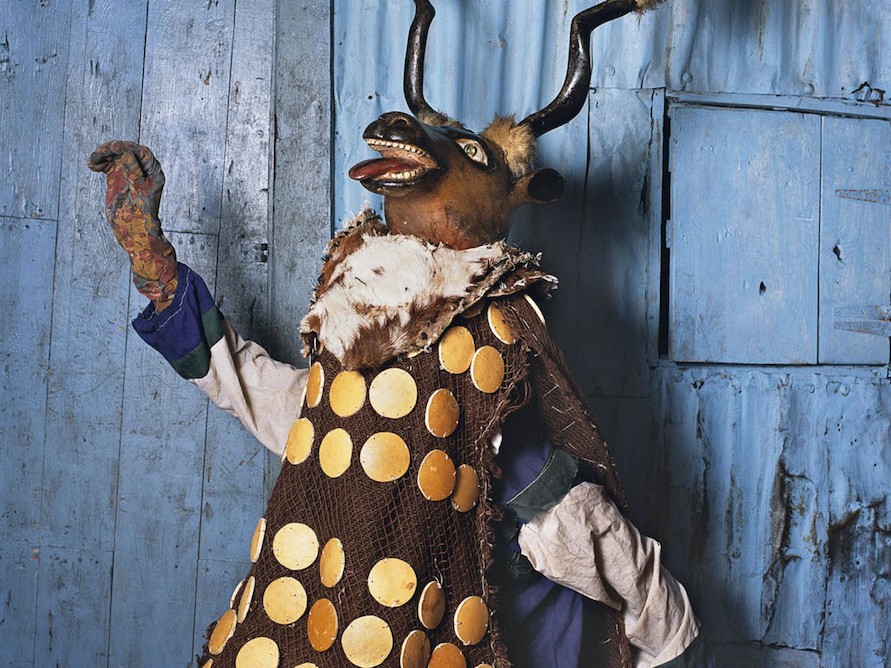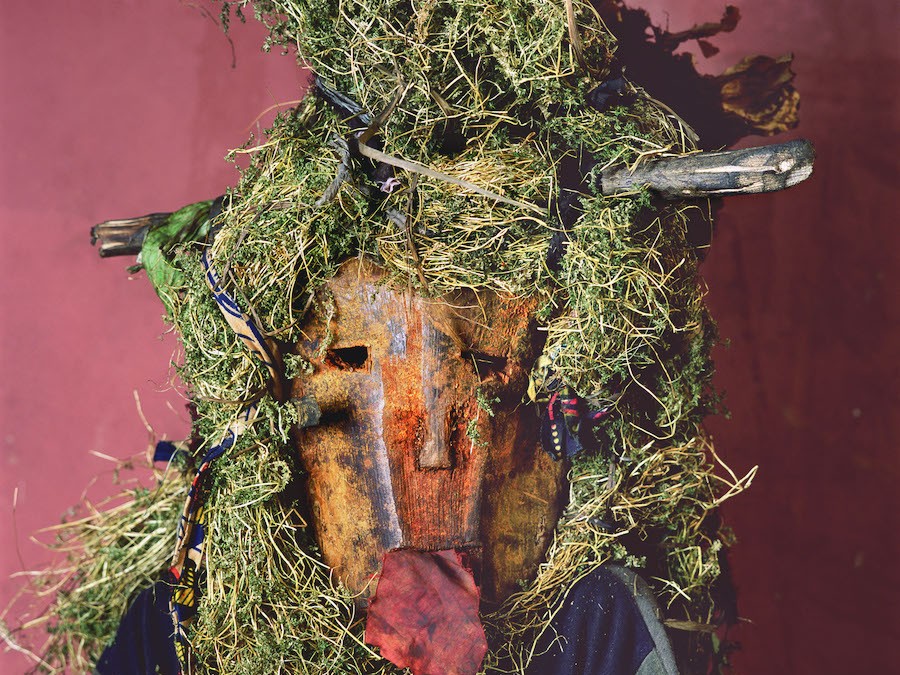Share this!
Big Five Game: What is a Big Five Safari?
If you are planning a safari you will undoubtedly come across the term The Big Five. Big Five Game, Big Five Game drives, Big Five safaris, etc. But, what does big five mean and where does the name come from?
Originally the name was coined in the 19th century and early 20th century by the “Great White Hunters” to identify the five most dangerous and difficult animals to hunt on foot. These are the lion, Cape Buffalo, Elephant, Rhino, and Leopard. Considered a rite of passage for European royalty and heads of state, most famously American President Teddy Roosevelt, these five animals were hunted and shot in extraordinary numbers throughout Africa. Today, most vacationers have traded in their firearms for a pair of binoculars and a camera.
The African Lion
Arguably the most sought after and iconic of the big 5 – Lions have become synonymous with an African safari. Beautiful, elegant and regal, lions are impressive hunters, but you’re most likely to find them napping in the shade. Lions can sleep up to 20 hours a day. When it comes to spotting lion’s, your success rate will be determined by where you go and who you chose as your Safari company.
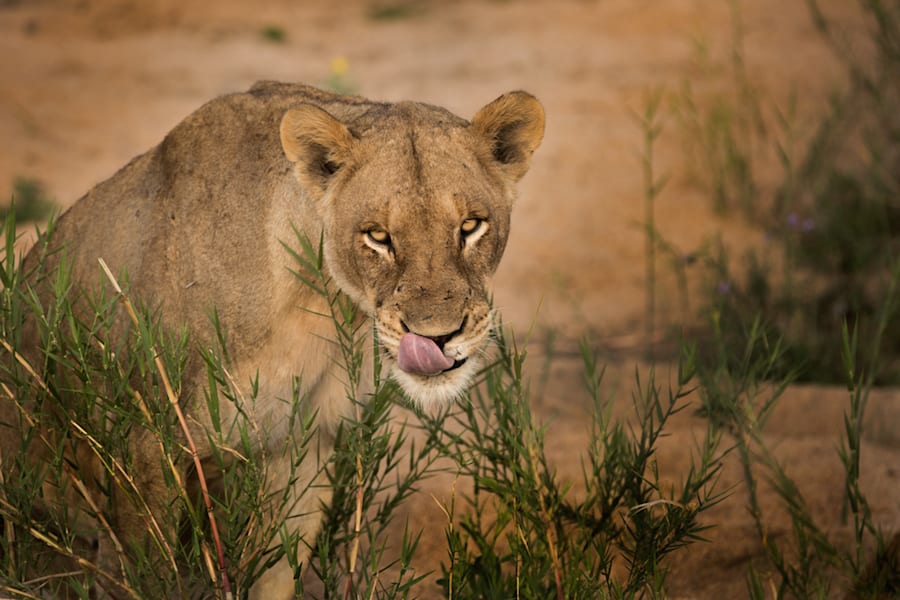
Best places to see wild Lions in Africa
Just over a century ago, there were more than 200,000 lions living in Africa. Today, there are estimated to be only about 20,000 living in the wild. As a result of excessive hunting, they are extinct in 26 African countries and have been listed as vulnerable since 1996 on the IUCN Red List. Lion Population infographic. The majority of Africa’s remaining wild lions can be found in East African countries of Tanzania and Kenya, and the Southern Africa countries of Botswana, South Africa, Zambia and Zimbabwe.
- Serengeti National Park – Tanzania’s Northern Safari Circuit: Serengeti National Park, Ngorongoro Crater and Lake Manyara – East Africa
- Masai Mara National Reserve in Kenya – East Africa
- South Luangwa & Kafue in Zambia
- Okavango Delta in Botswana
- Etosha National Park in Namibia
- Kruger National Park and Sabi Sand Game Reserve in South Africa
Five Lion Facts
- Known as “The King of the Jungle,” but lions actually live primarily in savanna and grassland areas.
- Lions are the second largest living cat after the Tiger.
- Lions typically live 10 to 14 years in the wild, but can live up to 20 years in captivity. Typically the darker a lions mane the older they are.
- A lion’s roar can be heard up to 5 miles (8 km) away.
- During one meal, lions can eat up to 40 pounds of meat.
The African Elephant
By far the largest of the Big Five game and the largest land animal in world. Easily recognizable by their trunk that is used for communicating and handling objects. There are two subspecies of African Elephants – The Savanna elephant and the Forest elephant. The Savanna Elephant is the larger of the two with their tusks curving outwards. Forest elephants are darker in appearance and their tusks are straighter and point downwards. While elephant’s have been recorded to congregate around watering holes in herds of 500 to 1,000 you are most likely to find families of elephants grazing. The typical elephant family has a matriarchal head and consists of a mother, her sisters, daughters and their babies.
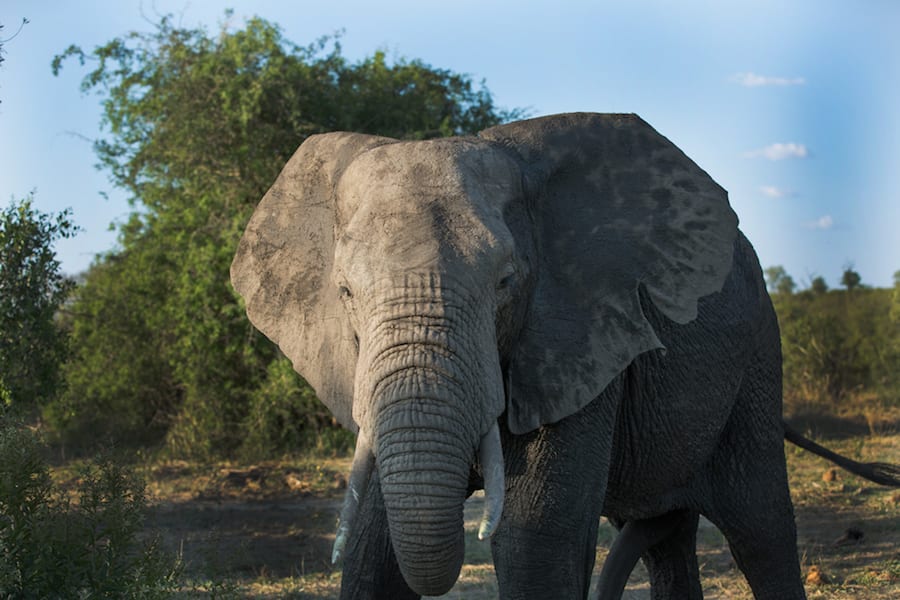
Best places to see African Elephants
At the turn of the 20th century, there were estimated as many as 3-5 million African elephants, today there are estimated around 415,000 living in the wild. Despite a ban on the international trade in ivory tens of thousands of African elephants are still being poached each year.
- Safari Lodge, Amakhala Game Reserve, South Africa
- Mombo Camp, Okavango Delta, Botswana
- Motswari Private Game Reserve, Timbavati
- Oliver’s Camp, Tanzania
- Nikasa Lupala Tented Lodge, Caprivi Strip, Namibia
Five Elephant Facts
- An adult elephant eats up to 375 lbs of plant material a day
- Baby elephants are breastfed up to the age of four or five years.
- Elephants use a wide range of sounds to communicate with each other up to six miles away including use a low frequency sound that cannot heard by humans.
- Elephants have the longest pregnancy amongst mammals – almost 22 months.
- The largest elephant ever recorded weighed about 24,000 pounds and was over 13 feet tall at the shoulder.
The Cape Buffalo
Cape buffalo are often overlooked on safari as wildlife enthusiasts seek out the big cats and majestic elephants during game drives. Not to be confused with the water buffalo. The Cape buffalo has never been domesticated and can live in large herds of up to thousands of animals. More often than not on safari you are most likely to find them in smaller herds of 10 to 30 animals on average. Notoriously dangerous, the Cape buffalo is also known as “The Black Death” and has been reported to kill more hunters than any of the other four animals combined. Though vegetarians, the Cape buffalo is extremely aggressive, loyal and vengeful. There have been stories of Cape buffalo ambushing hunters, killing lions for attacking one of their herd, and continuing to charge at hunters after being shot over 6 times.
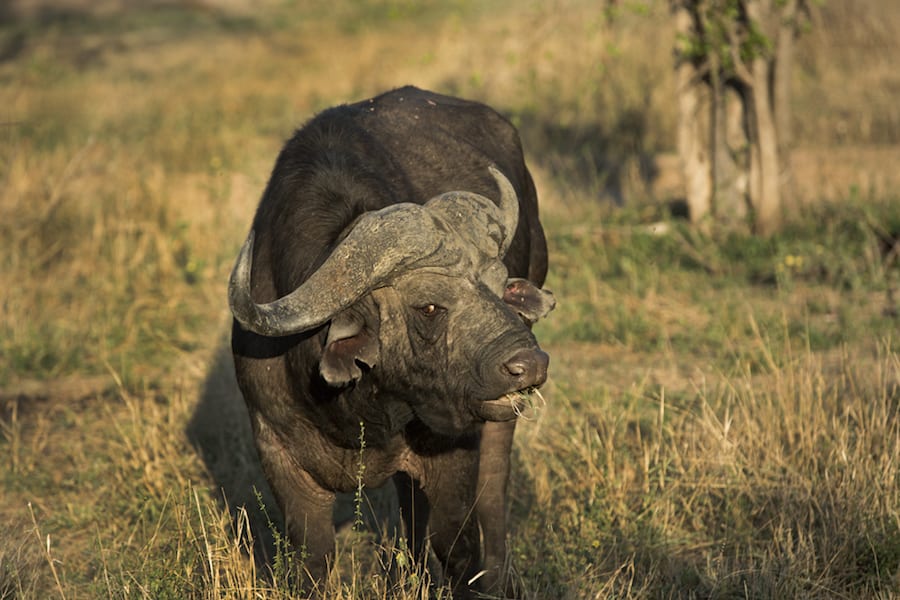
Best places to see Cape Buffalo
The African buffalo is not on the endangered species list and there are reportedly up to 900,000 still living in the wild. Cape buffalo cannot go long without drinking, and are rarely more than 10 miles from a water source. So you are most likely to find them grazing near rivers and waterways.
- Uganda’s Kidepo Valley National Park
- Tanzania’s Serengeti during migration
- Masai Mara
- Kenya, Tanzinia, South and East Africa
- Sabi Sands Game Reserve
5 Facts about Cape Buffalo
- So powerful they have been known to tip over cars
- The “boss” is the solid shield of horn that covers the top of the buffalo’s head
- Baby buffalo can run with the herd just an hour after being born.
- They horns can span 3 feet and they can run up to 35 miles per hour.
- The Ox-Pecker, a bird, enjoys a symbiotic relationship with the Cape buffalo by sitting on it’s back and gobbling up all the parasites living on it.
The African Rhinoceros
There are two types of rhinos in Africa: the black and the white rhino. Don’t be confused as both roughly slate grey in color. White rhinos got their name from the Afrikaans “weit”, meaning wide, in reference to the animal’s wide muzzle used for grazing grass. Black rhinos, smaller in size than the white, have a more pointed “narrower” lip used to pick fruit from branches. White rhinos are the largest land mammal after the elephant and due to their greater number are the most likely to be seen during an African safari. They tend to avoid the heat during the day and are usually active in the early morning, late afternoon and early evening.

Best places to see Rhinos
Rhinos face an uncertain future and are the most endangered of the big five. Loss of natural habitat and poaching are threatening their existence. The illegal trade is being driven by increasingly sophisticated poachers looking to fill demand for their horns in Asian countries, particularly Viet Nam. Between 1970 and 1992, the population of Black Rhinos alone has decreased by nearly 96%. There are estimated to be only 5,000 black rhinos, and around 20,000 white rhinos left living in the wild. 98% of white rhinos occur in just four countries in Africa: South Africa, Namibia, Zimbabwe and Kenya.
- Hluhluwe-Umfolozi Park – Kwazulu Natal, South Africa
- Kruger National Park – Mpumalanga/Limpop, South Africa
- Pilanesberg Game Reserve – North West Province, South Africa
- uMkhuze Game Park – Kwazulu Natal, South Africa
- Hlane Royal National Park – Swaziland
- Desert Rhino Camp – Damaraland, Kunene, Namibia
- Ol Peeta Conservancy – Laikipia, Kenya
5 Facts about the Rhino
- An adult white rhino is huge, weighing an impressive 6,000 lbs
- Although Rhinos have excellent hearing and senses of smell, they have terrible eyesight and have been known to accidentally attack rocks and trees.
- A Rhino’s horn is made primarily of keratin, the same protein found in your hair and fingernails and can weigh up to 6 or 8 lbs.
- Black rhinos can live to be 30-35 years in the wild. White rhinos can live to be 50.
African Leopard
The leopard is common in many of the African national parks, but can often be very difficult to track and spot. Leopards are solitary by nature and most active between sunset and sunrise. The leopard is the smallest of the big cats with the male roughly being half the size of a male lion, and rarely exceeding 200 lbs. They inhabit a wide range of habitats within Africa from savannahs, to mountains and grasslands and are well adapt to changes in prey availability. They have been documented to include at least 92 prey species in their diets ranging from rodents, birds and reptiles to large antelopes. Extremely stealthy, leopards are known to stalk close and run short distances to capture prey. They often cache large kills in trees to save their food from hyenas and other predators.
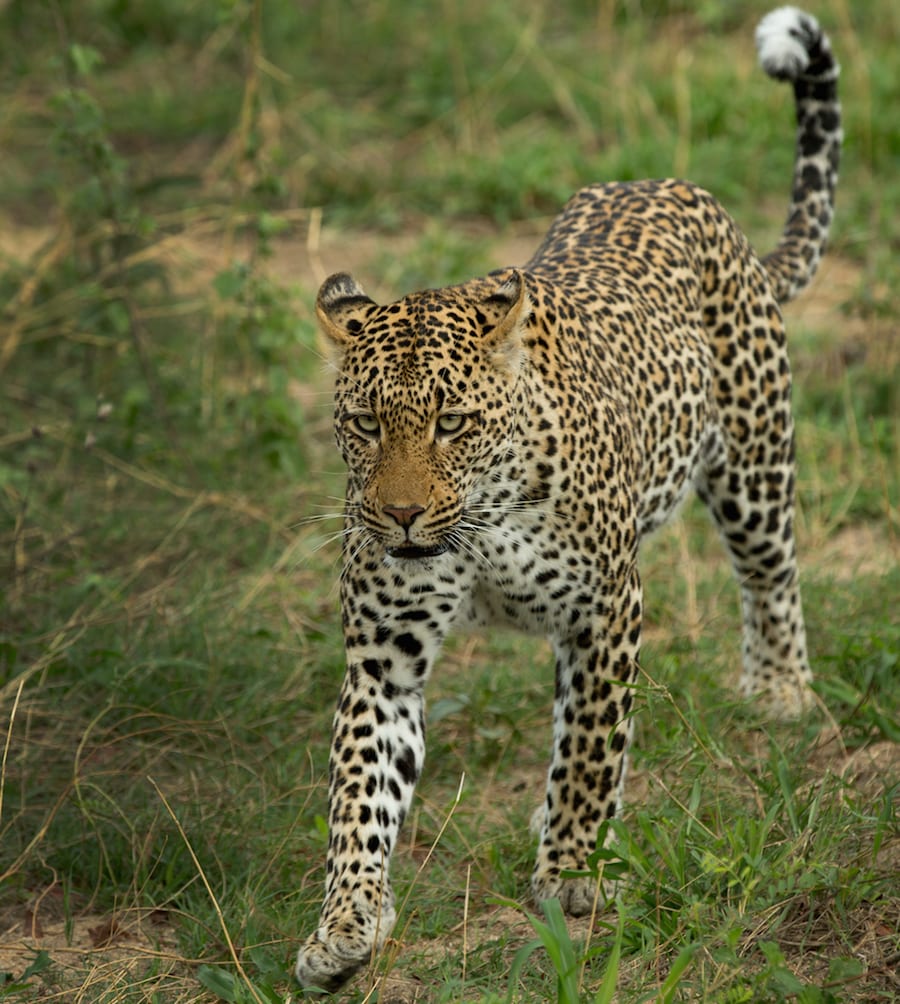
Best places to see Leopards
Due to their secretive nature it can be difficult to accurately asses the number of leopards living in the wild. Although the African Leopard isn’t endangered there is evidence that their numbers within South Africa is declining. The loss of prey animal population, habitat and rising conflicts with humans and their livestock have increased their risk. Ultimately, a leopard sighting, especially a good one, is usually about luck. But you can shorten the odds considerably at these places.
- Londolozi – Kruger National Park
- Moremi Game Reserve – Botswana
- South Luangwa – Zambia
- Samburu & Masai Mara reserves – Kenya
- Mala Mala – Sabi Sands. Krueger National Park
5 Facts about the Leopard
- Excellent swimmers and jumpers capable of jumping forward more than 18 feet and as high as ten feet.
- Leopards coat varies greatly in color based on their location and habitat from pale yellow to deep gold, and sometimes even black.
- Female leopards can give birth any time during the year and usually have two or three cubs.
- Smallest of the big cats, but the largest who can climb trees.
- Each leopard has distinct rosettes, markings, on their faces that can help distinguish them from others.





